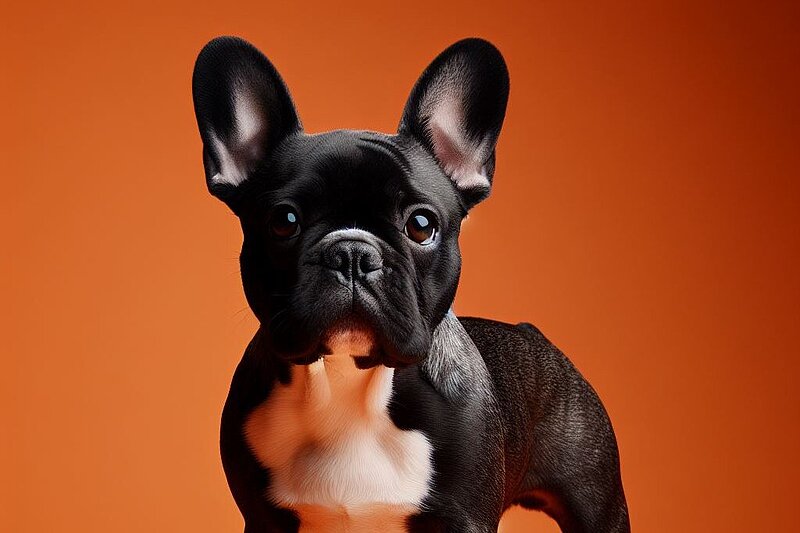The French Bulldog: The charming little companion with a big heart
The history of the French Bulldog
The French Bulldog originated in the 19th century as a cross between English Bulldogs and smaller terrier breeds. Originally, they were companions of the lace makers in Nottingham, England. With industrialization, many of these workers emigrated to France and took their small bulldogs with them. There they continued to crossbreed and developed into the dogs we know today. Their charming appearance and friendly character quickly made them a favorite among artists, intellectuals and the Parisian bourgeoisie.
Who is the French Bulldog suitable for?
The French Bulldog is the ideal companion for city dwellers and people looking for a loving but not too active dog. They are perfect for singles, couples and families. Since they are only moderately active and don't need hours of walking, they fit well in smaller apartments and urban environments.
Character: Friendly, playful and adaptable
Frenchies are known for their loving and affectionate character. They are playful, curious and often real clowns who like to make their owners laugh. At the same time, they are very people-oriented and enjoy being close to their family. Their adaptability also makes them good travel companions.
Appearance: Compact and muscular
The French Bulldog has an unmistakable appearance. With their large, bat-like ears, short muzzle and compact, muscular build, they attract everyone's attention. Their coat is short, smooth and comes in a variety of colors, including brindle, white, fawn and piebald.
Care instructions: Little effort, lots of love
Grooming a French Bulldog is relatively easy. Their short coat only needs occasional brushing to remove loose hair. It is particularly important to clean the skin folds on the face, as dirt and moisture can collect there, which can lead to skin irritation. Regular teeth cleaning and claw trimming are also necessary.
Health: a sensitive topic
Unfortunately, French Bulldogs are prone to various health problems. Due to their short muzzle, they often suffer from breathing problems and are sensitive to heat. Skin problems and hip dysplasia can also occur. A responsible breeder will take care to breed healthy animals and test for possible hereditary diseases.
Size and weight: Small but powerful
French Bulldogs are small dogs that typically reach a shoulder height of 30 to 35 cm. Their weight is usually between 8 and 14 kg, with males often being slightly heavier than females.
Exercise: Moderate and adaptable
Frenchies are not high-performance athletes and do not require excessive exercise. Daily walks and some playtime are enough to keep them happy and healthy. They are also ideal apartment dogs and are comfortable in urban environments.
Training recommendations: Patience and positive reinforcement
French Bulldogs are intelligent but can sometimes be stubborn. Positive reinforcement and consistent training are key to a well-behaved Frenchie. Early socialization is important to ensure they get along well with other dogs and people.
Interactions with children and other animals
Frenchies are generally very good-natured and friendly towards children. They enjoy playing and cuddling and are patient companions. They also usually get along well with other pets, especially if they have been socialized early on.
Recognition by the FCI
The French Bulldog is recognized by the Fédération Cynologique Internationale (FCI) and is listed in Group 9, Section 11 (companion dogs).
Interesting facts: A dog with many fans
Did you know that the French Bulldog can often be found in the homes of celebrities? Their charming nature has won over many stars and artists. They also have a large following on social media, not least because of their cute and photogenic appearance.
